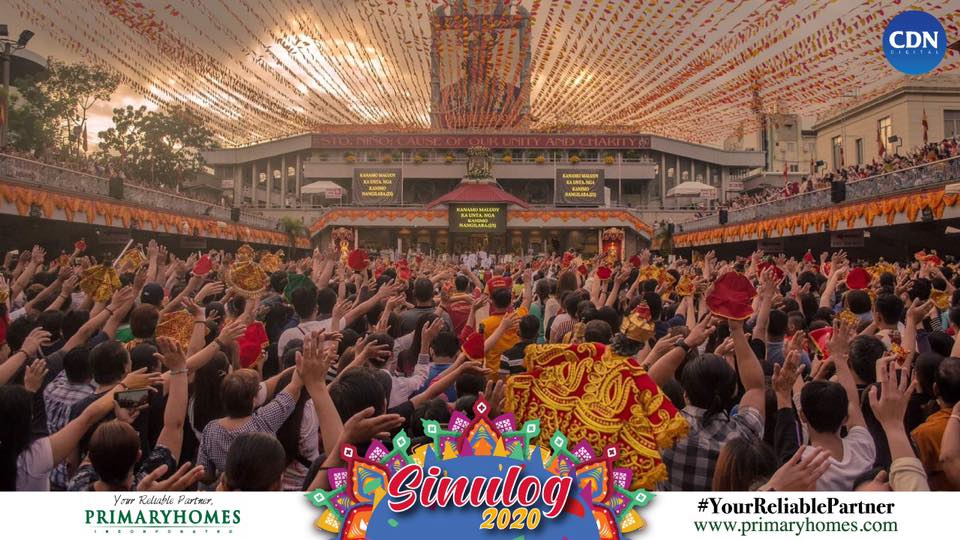Shortly after Cebuanos welcome the new year, the festive vibe in this part of the Philippine archipelago does not simmer down with leftover round fruits and Christmas decor.
The streets of Cebu City take on a palpable energy, even more festive than the previous celebrations, as Cebuanos gear up for what has been dubbed as the country’s grandest festival: Sinulog.
The streets are decorated with multi-colored buntings and life-size streamers.
In villages and schools, intensive practices are conducted with dancers perfecting their moves and props personnel making sure that materials are all set for the year’s ultimate performance.
Elsewhere, there are master artists who are working on their higantes and puppeteers so they can compete during the grand parade, which falls on the third Sunday of January.
This is how the Cebuanos celebrate its fiesta. It’s noisy, it’s fun, it’s Sinulog. The revelry echoes across the neighboring towns and provinces, loud enough to even encourage balikbayans and former residents to come home and join in the festivities.
Since the birth of the festival in 1980, Sinulog has been characterized by the iconic tune that was made livelier with drum beats and the chanting of the phrase “Pit Señor,” the shortened version of ‘Sangpit sa Señor’ which in English means “to call or ask the king.”
But there is no place in the city that embraces the plea to the king with warmth and sincerity other than the Basilica Minore del Santo Niño de Cebu.
While the cultural festival is called Sinulog, the church-related activities fall under Fiesta Señor, the part of the celebration where we see an interplay of faith, devotion, unity and charity which gathers people at the Basilica.
Busy fathers, working mothers, exhausted teachers, corporate employees, clueless children, excited students, and every single man and woman with prayers to the Holy Child Jesus gather inside and outside the Basilica to hear the Novena Masses which started on January 9, Thursday.
It is common to see children dressed in Santo Niño attire as their parents or family members bring them to the Basilica. When the crowd gets too tight for the child, the adult’s shoulders transform into a comfortable seat, providing a different perspective of this religious observation.
Many of these children started out clueless as to why they have to spend nine consecutive days hearing Masses with a crowd and, quite often, without a chair to sit on. Or why they wave their hands to pay homage to a child dressed in gold and red.
But many adults, who were brought by their parents to the Basilica to “meet Santo Niño” when they were children, grow up to share stories of how the visits strengthened their faith and resolve to do good to others.
For every parent, who brought their child to the Basilica before bracing the party-filled streets, you are worthy of emulation. You recognize that the very core of the festivity is the Holy Child, who, according to what history lessons taught many of us, is a baptismal gift by explorer Fernando Magallanes (Ferdinand Magellan) to Hara Humamay, wife of Rajah Humabon, the local chieftain of Cebu, when they landed on Cebu shores in 1521.
This year, 2020, we saw more children in all forms, shapes, sizes and moods in and around the Basilica. They have been the source of fascination, positivity, and inspiration by the many individuals that they have met on the streets in the midst of the crowd and heat.
Hundreds of thousands of these faithfuls gathered to join the masses, participated in the Traslacion, endured long walks during the foot procession, and for some, even faced their fears, by getting on a boat to be part of the fluvial procession.
This collective sacrifice echoes 1 Corinthians 16:13: “Be on guard. Stand firm in the faith. Be courageous. Be strong.”
This celebration is indeed a testament of the Cebuanos’ faith and devotion; for how else can one person describe the wave of faith as Batobalani sa Gugma is sang or as everyone performed the prayer-dance of two steps forward and one step backward.
As the gates of the Basilica opened and the devotion to Señor Santo Niño spilled to the streets of the city revealing several dance contingents, among them out-of-town delegations who come to Cebu to pay homage to the Holy Child, may this fiesta celebration bind us into a stronger and more faithful community who are there for each other to celebrate joyful moments and rely on each other in times of unavoidable challenges.
Pit Señor!
—
Primary Homes, your reliable partner, joins this growing community in faith and devotion to the Holy Child Jesus.
